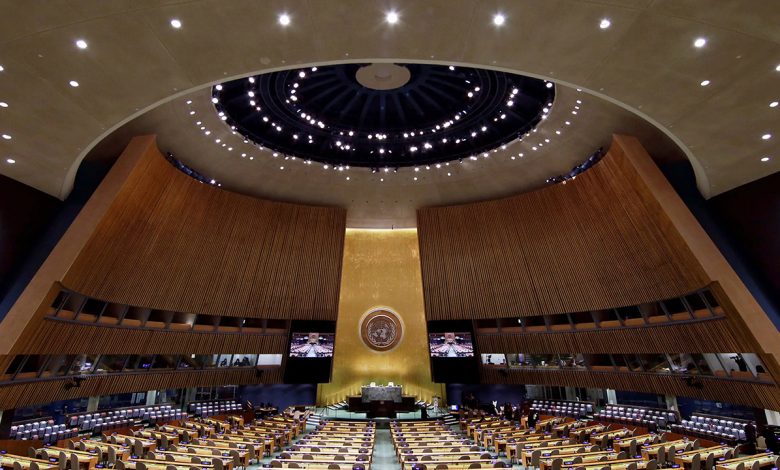Daily Current Affairs for UPSC
United Nations’ (UN) list of Least Developed Countries (LDCs)
Syllabus- International Organisations [GS Paper-2]

Context- Bhutan is about to move up to the seventh position on the UN’s list of least developed countries (LDCs).
Least Developed Countries
- LDCs are low-income nations that face significant structural obstacles to sustainable development. They lack human assets and are highly susceptible to economic and environmental shocks.
- The idea first emerged in the latter half of the 1960s and was formalized by UN resolution 2768 in November 1971.
- There are at present 46 nations on the rundown of LDCs which are inspected at regular intervals by the Committee for Development (CDP). 33 are from Africa, nine from Asia, three from the Pacific and one from the Caribbean.
- LDCs have exclusive access to a number of international assistance programs, particularly in the areas of trade and development assistance.
Criteria and Indicators for LDC Identification
- The General Assembly (GA) and the Economic and Social Council (ECOSOC) have given the CDP the responsibility of reviewing the list of LDCs every three years and making recommendations regarding the inclusion and graduation of eligible nations based on the following criteria:
- Per capita gross national income (GNI) below USD 1,230 over a three-year average.
- Human Resources: It is a proportion of the level of human resources.
- Vulnerability to the Economy and the Environment (EVI): The structural sensitivity to economic and environmental shocks is measured by the EVI.
- Key indicators that reflect structural weaknesses over time are used to evaluate each of the three criteria.
Inclusion in LDCs
- Every three years, the CDP makes recommendations for inclusion in and graduation from the LDC category.
- These proposals are not solely founded on the standards scores, corresponding country-explicit data and the perspectives on the public authority are likewise considered.
- The consideration, still up in the air by the CDP, should be met for every one of the three measures (GNI per capita, HAI and EVI) in one third audit.
What are the requirements to be removed from the LDC list?
- For two consecutive triennial reviews, a nation must demonstrate that this level of income can be sustained over the long term by having a GNI per capita of at least USD 1,242.
- By utilizing measures like schooling, wellbeing, and nourishment, a country should show that it has further developed its human resources, for example, growing proficiency rates, bringing down lack of healthy sustenance rates, and improving admittance to medical services and training.
- To pass the economic vulnerability test, a nation must also demonstrate improved ability to withstand external economic shocks like changes in commodity prices or natural disasters.
Countries that Have Acquired the Status of LDCs
- Six Countries have Acquired the Status of LDCs:
- Botswana in December 1994
- Cabo Verde in December 2007
- Maldives in January 2011
- Samoa in January 2014
- Equatorial Guinea in June 2017
- Vanuatu in December 2020
- Botswana graduated in 1994 primarily due to its strong economic performance, which was fueled by investments in education and infrastructure as well as the diamond mining industry.
- Carbo Verde graduated in 2007 as a result of investments in tourism, fisheries, and services, as well as the strategic positioning of its location as a hub for sea and air transportation in order to assist in attracting investment from abroad.
Case Study: Bhutan
- In 1971, Bhutan joined the first group of LDCs. Bhutan previously satisfied the prerequisites for graduation in 2015, and afterward again in 2018 and consequently booked to graduate in 2021.
- However, the UN postponed the delisting because it considered Bhutan’s request to coincide with the conclusion of the country’s 12th national development plan in 2023 to be legitimate.
- Bhutan has generally achieved this by expanding products of hydropower to India, additionally settled Brand Bhutan with an end goal to enhance trades with specific commodities of high-esteem, low-volume Bhutanese merchandise. Textiles, tourism, handicrafts, culture, and natural resources are all sources of their products.
Transition from LDCs to developing nations
- Actions by countries: establishes a consultative mechanism to facilitate the preparation of a national transition strategy in collaboration with development partners. May seek assistance from the UN system in the preparation of the transition strategy.
- annually submits voluntary reports to the CDP regarding the preparation of the transition strategy.
- Method for a smooth transition: aims to prevent graduation from interfering with development efforts.
- focuses on the expected effects of losing LDC status and the special support measures that go along with it.
- presents a comprehensive and unified set of specific measures that take into account the specific structural challenges, vulnerabilities, and strengths of the graduating nation and are in line with its priorities.





.png)



